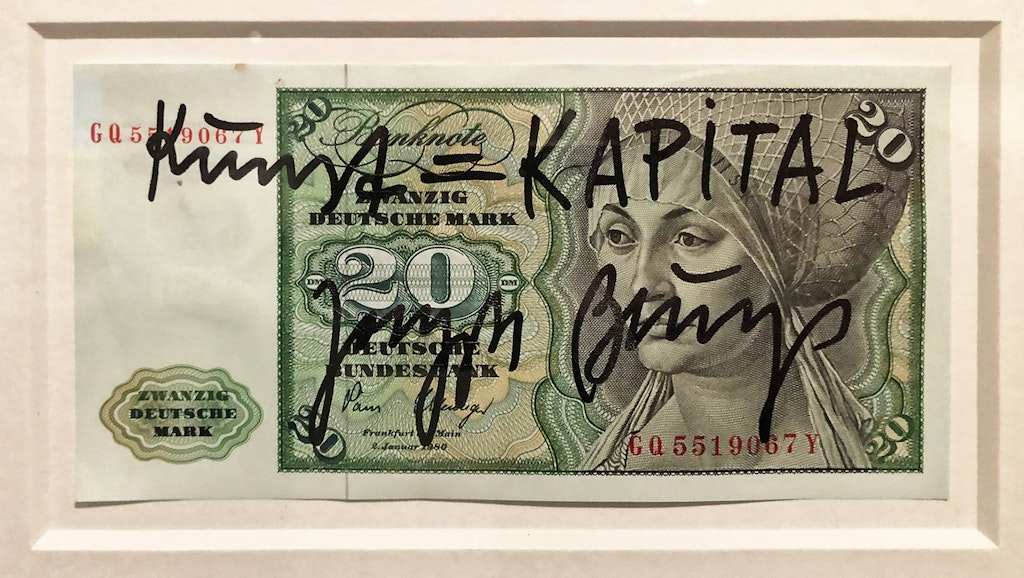Between war and empire
Jeremy Black weighs in on two recent historiographical offerings
Harper offers an excellent work that draws on his great understanding of South-East Asian history and provides an arresting account of a strand in imperial history.
Whereas his co-written Forgotten Armies and Forgotten Wars were each somewhat weak as military history, this new book superbly captures its topic, ranging widely to consider anti-imperial history and also to link it into the wider geopolitical and ideological themes of the period, including nationalism, great-power competition and the impact of Communism.
Contextualisation in my view trumps unilinear approaches
The tales of particular careers and episodes, for example the Singapore rising of 1915, are well-handled. So also, with imperial concerns about assassination. There is also a good handling of racism, although I would have preferred much more on imaginative literature. Thus, Fu Manchu receives far too little attention, and, more generally, it would have been useful to know much more about publications and across a range of mediums. That, indeed, would be a worthwhile follow-upproject.
This is also necessary because the central problem of all such studies, one that Harper understands and ably probes, is how to move from an assemblage of particular networks of rebellion to grasp wider questions of the stability of empire. Here it would have been useful to look at other sources.

London, 2020. £35.00.
For example, as also in his earlier work, there is much more to be said about the military dimension. Here again, it is necessary to cite with caution. Thus, in 1922, at the time of the Chanak Crisis, which is of relevance to this book even though in South-West Asia, Lord Rawlinson, Commander-in-Chief India, warned about the danger of conflict spreading across the Islamic world: “To undertake offensive action against the Turk is merely to consolidate a Pan-Islamic movement,” a threat that also concerned the General Staff in London.
So, empire at risk; but, in practice, read across the breadth of military correspondence, the overall emphasis is less on insurrection than on external threats. And so also for France, which in the 1920s faced rebellions, including in Syria and Vietnam, but was primarily concerned about Italian volatility under Mussolini and also the danger of Italian-Spanish co-operation. Harper might well disagree, and there is room for a debate, but it is disappointing not to see such a discussion given real prominence in this excellent work. Contextualisation in my view trumps unilinear approaches, let alone “thick history” however widely the latter is defined.
I agree entirely that the “Cold War” should have a longer duration, and, indeed, argued this in my book on the subject. It in practice began with the Russian Civil War, but Harper skilfully interleaves it with a number of passages to radicalism, including communism, “Islamism” and Sikh militancy, although more attention could also have been devoted to the respective “internationals” of religious thought and practice. More generally, the international dimensions of a subject too often treated in terms of national narratives emerges very well in Harper’s study, but some of the judgments could do with qualification. Thus, “the colonialism of the 1930s was shot through with nostalgia,” is only true to a point as such an assessment underplays development strategies.
The routine abuse of prisoners by other inmates is itself a serious problem in modern India
Or of the remote Dutch detention camp at malarial Boven Digoel in New Guinea: “in colonial Asia in the 1930s such places multiplied, a premonition of the new camps that were opening in Europe”; actually no, not at all like the Soviet gulags or the Nazi regimen. Take, for example, the Cellular Jail built by Britain between 1896 and 1906 at Port Blair on South Andaman Island for political detainees deported from mainland India. In 1921, following revelations of brutality by prison guards, it was decided to end the transportation of prisoners to Port Blair and to repatriate the political prisoners to mainland Indian jails. However, in turn, overcrowding in mainland jails resulted in a revival of the transportation of non-political prisoners, while political violence in India led to the dispatch of political detainees to the jail. This was contentious, notably because of hunger strikes in 1933 and 1937 against conditions there. As a result of this controversy, political prisoners were returned to mainland India.
In the Cellular Jail, as now presented to visitors, the harsh nature of the prison regime, and thus allegedly of imperial rule by Britain, is demonstrated by both commission and omission. There is a presentation of single cells and the consequent night-time solitary confinement as abuses designed to break the spirit of prisoners, and not an explanation that these were then advanced practice and likely to lessen the serious risks of the spread of infection.
The routine, and sometimes deadly, abuse of prisoners in shared cells by other inmates is itself a serious problem in modern India (and elsewhere), although the well-connected do not tend to go to prison or, indeed, face the risk of conviction. Far from being a matter simply of colonial control, moreover, the Cellular Jail was constructed on lines similar to Pentonville prison in London, which had been opened in 1842, and was considered state-of-the-art, as it indeed was.
Present-day information for visitors to the Cellular Jail praise the hunger strikers as courting “martyrdom,” refers to “brutal and sadistic torture,” and describe the work that detainees did as “soul shattering” and “intended to function as a form of torture.” This approach scarcely captures the extent to which such work was fairly typical for prison regimes, and in both domestic and imperial contexts. There is a life-size model of a prisoner being flogged, as well as the remains of the gallows. Displays provide highly emotive comments:
Living hell … today a sacred place … the everlasting flame for achieving freedom … holy fire in memory of freedom fighters who died here … so that future generations could know about the revolutionary freedom movement and appreciate the tremendous cost at which our independence was achieved.
These iniquities were driven home for those who could not travel to Port Blair in a 1996 film by Priyadarshan, a film entitled Kaalapani in Malayalam and Siraichalai in Tamil. Expounding through history the value of independence, the jail now serves as an account both of a valiant struggle for freedom and of the harshness of imperial rule, the latter apparently demonstrating the need for this freedom.
The imperial perspective, understandably, is absent. That some of the cases for which prisoners were imprisoned at Port Blair, for example the Lahore Conspiracy case of 1915, occurred when Britain was involved in World War One, in which many Indian volunteers fought for the empire, is not brought out. Nor is the point that the murderers of judges generally are not treated as heroes.
A fascinating book, and a useful angle on empire, but incomplete
Moreover, other Indian perspectives are not considered at the jail. In practice, indeed, Indians disagree about the unity and heroic status of the prisoners. For example, the shock created for the prisoners by losing caste in being sent to prison meant more to some Indians than others and is not mentioned in the jail. Caste rifts between patriots are not part of the narrative. There was also a tension, again not mentioned, between the prisoners’ stance in the 1930s and that of the non-violent opposition to British rule associated with Gandhi. A fascinating book, and a useful angle on empire, but incomplete, albeit necessarily so.
Todman’s book is a sequel to the justifiably favourably reviewed Into Battle 1937-1941, this is an important work, that, like its companion, benefits from the decision to include an overlap with the years beyond the war, in this case with the independence of India and Pakistan in 1947. That proves an appropriate way not only to approach the context of what was a global struggle, but also to assess its consequences.
A thorough well-done for Todman, with a minor complaint. The book is handsomely produced, not least with a clear typeface, illuminating photographs (for example of ATS telephone operators), and a few maps, but it is large and heavy. At times, as with other of their books, I cannot help wishing that Allen Lane could be kind to their readers and produce not only quality but also comfort.

Penguin, 2020. £35.00.
The judgments are sage and also humane. Thus, a good passage on garrison life in Cairo (sex is a recurrent theme in the book) includes “From 1942, Britons would complain a lot about the behaviour of American GIs in the UK. They should have tried spending a week as an Egyptian in Cairo,” or for the 1943 Aegean debacle: “By the standard of the Second World War, it was a sideshow, but a costly and revealing one. Even in an area under the aegis of General Wilson, a British supreme commander, unilateral British expeditionary action was no longer possible.”
More pertinently this was force-projection without air superiority, as well as an episode that did not capture Churchill in a good light and one that threw light on the idea of a Balkan strategy. The examples cited are pertinent, for example fatalism in the face of V2 strikes, as well as the 1,250 toilet pans necessary for repairs after a single strike on Barnet. There is no tale off. Thus, the role of the British Pacific Fleet receives sufficient attention, as well as the 1945 election. There is a good coverage of the Home Front, both under fire and just coping, and also of the troops, whether Field Hygiene Sections “trying to make sure soldiers crapped in the right place” or the psychological strains of conflict, the 670 million cigarettes in Normandy NAAFI stocks by mid-July 1944, or the sickness and low morale of the unsuccessful Arakan offensive in 1943.
Todman has done very well, but, unsurprisingly, the subject is far from closed
I liked this book which contributes to the important re-evaluation of the British war-effort. Scholars such as Buckley, Caddick-Adams and Holland have thrown much light on the fighting war against Germany, Marston and Moreman on the war in Burma, and so on. And so on for other combatants, notably the Soviets, on which see Hill most recently. Possibly, indeed, as a result, it is time for another re-evaluation, this time one that puts the British achievement into a wider comparative context. That would require a different book to that by Todman, excellent as the latter is. He is particularly to be praised for giving due weight to the British war with Japan, but doing so simply increases the value of comparative reflections, as also with the improvements in American and Australian fighting capabilities.
Moreover, there is another issue of significance, one to which there can be no fixed answer. How far should there be an explicit engagement with general topics of the history of war, including with the relevant conceptual, methodological and historiographical literature? No complaints about Todman here. He has done very well, but, unsurprisingly, the subject is far from closed.
Jeremy Black’s books include A History of the Second World War in 100 Maps, Tank Warfare. Avoiding Armageddon. From the Great War to the Fall of France, 1918-40 and Imperial Legacies: The British Empire Around the World.
Enjoying The Critic online? It's even better in print
Try five issues of Britain’s most civilised magazine for £10
Subscribe














